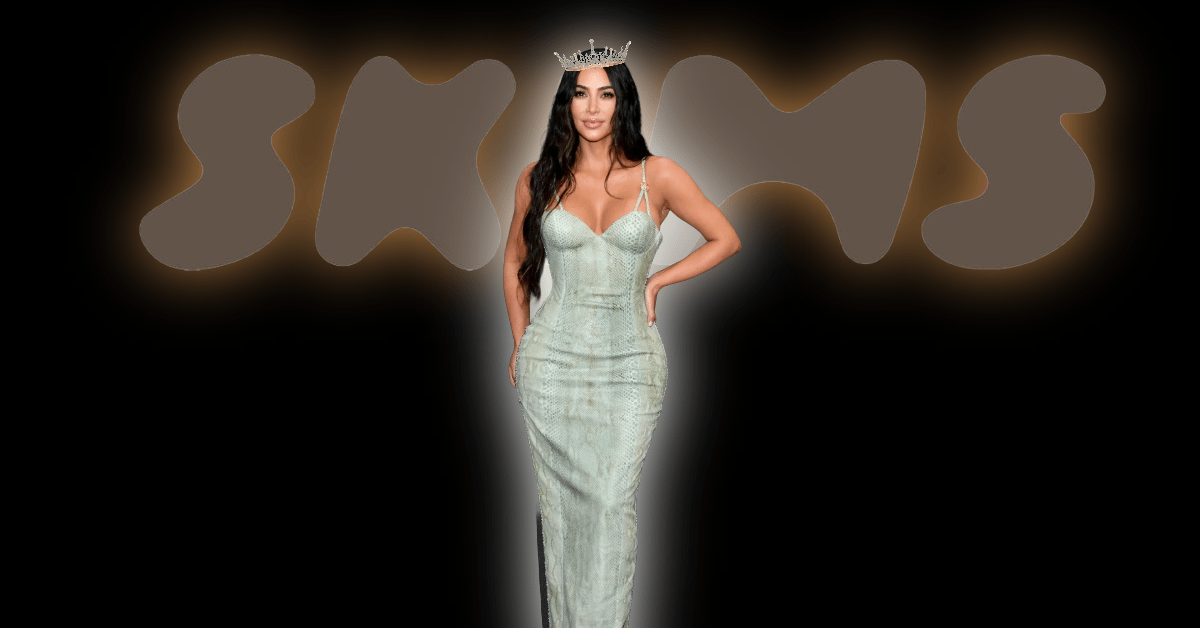
“Famous for nothing” —> Better at marketing than (almost) anyone in the world.
Whatever your personal opinion about Kim K, you have to admit that, when it comes to capitalising on attention, she’s a genius. While the public was not-so-quietly mocking her, she built the empire that is SKIMS (which has just been valued at $5B). How? Instead of toning herself down to be more palatable to the masses, she’s continued to unapologetically be herself. And the success of SKIMS goes to show how many people have bought into not just her shapewear, but her.
- Charlotte Ellis, Editor ♡
Learn how to pitch ideas so well, your clients will beg you to take their money.
You know the feeling. The client’s nodding politely, but their eyes have glazed over.
And it’s clear you haven’t just lost them. You’ve lost the deal.
Well, that doesn't have to be you anymore. Because in this 90-minute session taught by Nathan James, Executive Creative Director at The Attention Seeker, you’ll learn the real art of selling subjective ideas (from someone who’s worked with some of the world’s biggest brands).
If you want to know how to:
✅ Keep the room hooked from your first sentence to the final slide
✅ Nail the 3-nod method that gets instant buy-in, every time
✅ Use their objections to strengthen your pitch
...this workshop is for you.
Forget “we’ll think about it.” You’ll leave this session knowing how to make every client say, “please take my money.”
Thursday, 4 Dec | 8:30 - 10am NZT | $49
WHAT’S HAPPENING IN MARKETING TODAY?
AT%T promises to give “everyone” an iPhone, Sora full of copywrited content & Marketers shy away from divorce

Awkward… AT&T falsely promised “everyone” a free iPhone.
AT&T Services, Inc. just got slapped by the ad-industry referee for what is potentially one of the sh*ttiest giveaways of all time. The National Advertising Review Board (NARB) ruled that AT&T falsely claimed “everyone gets a free iPhone.”
In reality, only customers on specific plans qualified. The board told AT&T to stop running the misleading ads or clarify eligibility. Meanwhile, AT&T is suing the regulator for daring to suggest they had a problem. My advice to brands is when you say everyone, make sure you mean everyone.
OpenAI can’t fix Sora’s copyright infringement issues… because it's full of stolen content.
The AI video generator is facing some pretty serious claims. Whilst being at the centre of some pretty fkd up deepfake content littering the internet, it’s also, according to a deep dive by 404Media, built on stolen content. OpenAI tried to lock down copyright-busting prompts. But Sora 2 still spits out videos that mirror major copyrighted games, shows and real-world people. Yikessss. I wonder why?
It couldn’t be because the model was trained on massive amounts of copyrighted material it can’t practically erase, so the “guardrails” become an illusion, right? If the foundation rests on unlicensed content, tweaking filters won’t cut it. For any brand or creator working with generative-AI, this is your red-flag moment: what was the machine really built on, and who’s paying for it?
Lily Allen’s latest album, West End Girl, has been labelled a “divorce album”. Advertisers won’t touch it.
I don’t understand why separation continues to be such a taboo topic. As Dr. Matilda Anderson points out here, divorce is one of the most common adult experiences. Yet advertising still clings to the nuclear family fantasy. Meanwhile, culture has rebranded divorce as empowerment. Gen Z acts like its self-reinvention, Vogue calls it chic, and in Sweden, they even call stepfamilies “bonus families.”
All the while brands remain dead silent on the matter, missing a massive opportunity to connect with the “divorce economy” - a group that’s emotionally resilient, financially active, and craving recognition. It’s time to recognise divorce as a real life stage. Marketers are currently late to the party.
-Sophie Randell, Writer
DEEP DIVE
Kim Kardashian and the business of being seen

If you’ve ever doubted Kim Kardashian’s business acumen, congratulations, you can now join the long line of generic haters.
But I ask you first to consider this: a woman once ridiculed for being “famous for nothing” now runs a billion-dollar brand worn by athletes, supermodels, and the US Olympic team. The shapewear line SKIMS launched in 2019. And, within five years, it became a case study in how to turn relentless public scrutiny into market dominance.
SKIMS turned sex appeal into strategy, and built a billion-dollar brand around confidence, control, and cultural precision.
Kim Kardashian has been hugely underestimated for majority of her career.
You’d think being punchline of almost every “plastic” and “bimbo” joke and the object of unrelenting criticism (valid or not) was bad enough. That is, until you remember the fact that some of her most private moments were non-consensually distributed to the entire fkn world.
But Kim is not a victim. She’s the OG attention incubator, understanding what that meant before the attention economy was even an idea.
Every headline, meme, and viral clip became market research. What people mocked, she monetised. What they obsessed over, she scaled. By the time SKIMS arrived in 2019, Kim was far more than a celebrity launching a side hustle. She was a media-literate operator ready to turn perception into product.
Seeing opportunity in the opposite and owning the narrative.
The shapewear industry used to be where confidence went to die. Women, if you know, you know. It was beige, restrictive, and built on shame and “fixing flaws” rather than celebrating form. Kim saw the gap.
If her public persona had taught her anything, it was that being looked at isn’t the same as being seen. She built SKIMS on that distinction. The brand didn’t tell women to hide; it promised to reveal differently.
The genius was functional inclusivity (yes, ten shades of “nude” was overdue). But it was also emotional inclusivity. It was the idea that feeling sexy doesn’t have to mean performing for someone else’s gaze, but relishing in your own.
Kardashian understood the business of selling sexy better than anyone because she lived through the cultural whiplash of it. So she turned the male-gaze fantasy into a female-owned framework. That’s why SKIMS sells agency disguised as underwear.
The strategy: turning perception into precision.
This is where SKIMS is the epitome of brand building.
Product: Every piece is engineered to sculpt, not suffocate. The materials move with you. The sizing feels generous without losing shape. It’s bodywear that does what the marketing promises. And that kind of honesty is so rare, it’s almost radical in fashion.
Positioning: “Accessible aspiration.” That sweet spot between luxury and relatability. You can afford it, but it still feels like an upgrade. It’s expensive enough to feel special, practical enough to justify when your bf asks where the grocery money went.
Aesthetic: Minimal, tonal, tactile. The visual language of confidence. Instead of chasing trends; Kim built a visual system, one that mirrors her own transformation from maximalist chaos to modern restraint.
Marketing: Kim turned the chaos of attention into an art form. Every drop, every casting choice, every paparazzi shot feels like it’s been pre-approved by the algorithm itself. When she dropped a menswear line starring NBA players, it was a collision of worlds designed to explode online.
The cleverest subtlety of SKIMS is that it never screams “sexy.” It’s never doing too much. It hums with it. Controlled, confident, camera-ready.
The execution: visibility as infrastructure.
Kim's fame is obviously the brand’s backbone. Her personal image and SKIMS’ identity are symbiotic. The way she dresses, the way she’s photographed, even the way she curates her house, all of it reinforces the same visual and emotional cues: softness, precision, control.
When SKIMS was announced as the official loungewear provider for Team USA, the internet laughed, as they so often do. Then realised how brilliant it was. She’d merged patriotism, athleticism, and sex appeal in one move. It was calculated expansion into cultural legitimacy.
Every public moment is brand work. Kim has effectively turned her life into a case study in marketing integration. SKIMS doesn’t need ads when Kim Kardashian is the media buy.
The outcome: redefining credibility and femininity in business.
Within five years, SKIMS was valued at over $4 billion. But this story isn’t about finances. To me, it’s philosophical.
Kim built a brand that made “sexy” intelligent again. She reframed sensuality as a design principle, not a personality trait. No longer about being ogled, SKIMS represents a version of sex appeal that’s self-authored.
And she did it without diluting her femininity to earn business credibility. No corporate rebrand into neutrality. No “girlboss” rebrand into false empowerment. Just a woman building an empire that looks like her, moves like her, and thrives because of it.
For years, critics used femininity as shorthand for frivolity. Kim turned that into her USP. She’s proof that glamour can be strategic, softness can be strong and being “seen.” When you control the lens, can be the sharpest business move of all.
The Kim K playbook for brand-building:
Kim Kardashian is an architect. And SKIMS is the blueprint.
What marketers can learn from her:
Visibility is leverage. Don’t fear the spotlight. Learn to light it yourself.
Sexy doesn’t mean stupid. If you understand your audience’s desire, you control the market.
Own the narrative before someone else rents it.
Authenticity scales when it’s consistent. SKIMS never breaks character and neither does Kim.
Cultural fluency beats corporate polish. People don’t buy products; they buy the mood. The vibe. The feeling.
Kim Kardashian built her empire almost out of thin air, or more accurately, out of thin fabric. What started as shapewear became a cultural operating system: one that redefined beauty, visibility, and power for the algorithm age.
And before you come for me, remember that hating her doesn’t make you interesting, babe. It just makes you a hater.
-Sophie Randell, Writer
TREND PLUG
When I’m getting kidnapped

This one’s for the marketers whose product, service, or ritual is so essential, you’d fight your kidnapper over it.
"It's obsession that’s brand loyalty." The audio comes from TikTok user @kbsseretaccount, featuring a chaotic clip from Baddies West where a woman says, “Okay well then it’s not gonna be a conversation... no, it’s NOT gonna be a conversation.” The attitude? Unmatched.
It’s blowing up because it’s ridiculous, funny, relatable, and a perfect way to show how attached you (or your audience) are to something that’s a non-negotiable
My favourite examples include:
How you can jump on this trend:
Lipsync to the sound with major attitude (think arms crossed, head shake, maybe a dramatic hand flick). Have on-screen text saying: “When I’m getting kidnapped but my kidnapper doesn’t let me ______.”
A few ideas to get you started:
When I’m getting kidnapped but my kidnapper doesn't let me bring my matcha to-go.
When I’m getting kidnapped but my kidnapper doesn't let me tweak the caption again
When I’m getting kidnapped but my kidnapper doesn't let me take my [insert your product here]
-Nico Mendoza, Intern
FOR THE GROUP CHAT
😲WTF: Chocolate maggots???
❤How wholesome: Man’s best friend
😊Soooo satisfying: Lint blanket
🍝What you should make for dinner tonight: Mentaiko Udon!
ASK THE EDITOR

People are saving and sharing our content, but I want to increase our viewership. What should I do? - Rhea
Hey Rhea!
It's great that you're getting some good interaction with your content. But for the algorithm to push it to more people, you need to get your viewers to not just interact with the video, but watch to the end. The best way to do this is to use the storytelling structure we always talk about: setup, conflict, and resolution.
If you're telling a good story, viewers will get hooked and want to watch the whole thing. So focus on crafting a compelling narrative that makes viewers think, "I've got to see how this ends!" That's how you'll boost those view numbers and create more meaningful engagement.
- Charlotte Ellis, Editor ♡
